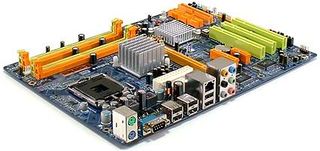Overclocking Guide Part 2: Suggested Components and Settings
Low-Cost AMD: DFI INFINITY NF ULTRAII-M2
The result of our AM2 search is interesting, in that the most reputable "cheap" part uses a previous-generation nForce 4 Ultra, rather than a current 500 series chipset.

The flip side of using older technology is that it allowed DFI to equip its board beyond the basic needs of the low-cost market. The company added features such as dual-graphics capability, onboard digital audio output, IEEE-1394 FireWire, and a wider range of overclocking settings. HyperTransport clock speeds beyond 300 MHz are widely reported for this model, but such wild overclocking attempts will probably require dropping the HyperTransport data multiplier from 5x to 3x.
Low-Cost Intel
The best-overclocking mainstream Intel chipset is its P965, and nothing really compares at similar price points. Sadly, we found no sub-$100 P965 chipset motherboards that support full overclocking options; the few available this cheaply typically have crippled BIOSes.
The closest "good overclocking" board to our target price limit is Biostar's $105 TForce 965PT. This reduced-feature version of the board we tested last fall supports the same overclocking options, and is reported to be capable of bus speeds from 350 MHz to 500 MHz and beyond (FSB1400-FSB2000+) - depending on luck and which other parts are used.

Those who would like to pair our low-cost CPU recommendation with this low-cost platform will be glad to know that it supports the Celeron D, as well as the Pentium D and Core 2 Duo, easing future upgrades.
Stay on the Cutting Edge
Join the experts who read Tom's Hardware for the inside track on enthusiast PC tech news — and have for over 25 years. We'll send breaking news and in-depth reviews of CPUs, GPUs, AI, maker hardware and more straight to your inbox.
Current page: Low-Cost AMD: DFI INFINITY NF ULTRAII-M2
Prev Page Mid-Priced Intel: Core 2 Duo LGA775 Next Page Mid-Priced AMD: EPoX MF570 SLIMost Popular



